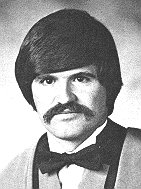Daryl M. Wightman

M. Sc. Thesis
The Sedimentology and Paleotidal Significance of a Late Pleistocene Raised Beach, Advocate Harbour, Nova Scotia.
(PDF - 55 Mb)
Continuous quarrying of a gravel pit at Advocate Harbour permitted a detailed 3-dimensional study of a raised Pleistoene beach. The beach is divided into two units that are separated by an erosional surface; a lower, progradational gravel unit and an upper, transgressive sand unit.
The progradational gravel unit consists predominantly of poorly sorted foreshore beds, but the low tide terrace, backshore and channel facies are also present. The low tide terrace consists predominantly of cross stratified sand that dips seaward and is interpreted as a subtidal deposit. The foreshore facies consists of low angle (5o-14o) seaward dipping gravel beds interbedded with discordant high angle cross beds. Gravel in the backshore facies is better sorted and finer grained than in the foreshore facies. Storms deposit gravel either in landward prograding washover fans or in low angle, graded beds that dip seaward. The channel facies consists of channel deposits that occur in the foreshore and backshore facies. Storm runoff and tidal infilling and draining of a lagoon landward of the beach have probably formed the channels. The vertical distance between the low tide terrace and the backshore facies delineates a maximum paleotidal range of 3.4 m. This contrasts markedly with the present maximum range of 12.6 m.
The transgressive sand unit occurs above the gravel unit and consists of a core of well sorted washover fan gravel overlain by sandy foreshore and backshore beds. The sandy foreshore and backshore beds meet at the crest of the beach and define the highest stand of the sea during the formation of the beach, 27.3 m above present sea level. The vertical sequence of sediments is supratidal overlain by foreshore, which indicates a transgression. This transgression is probably the result of the eustatic rise in sea level exceeding glacial rebound for a short period of time. The beach was stranded when glacial rebound again exceeded the eustatic rise in sea level.
A model for gravel beaches is proposed which delineates paleotidal range. The model is a synthesis of the sedimentological data from the raised beach at Advocate and the published data on gravel beaches.
Keywords:
Pages:167
Supervisor: D. J. W. Piper



